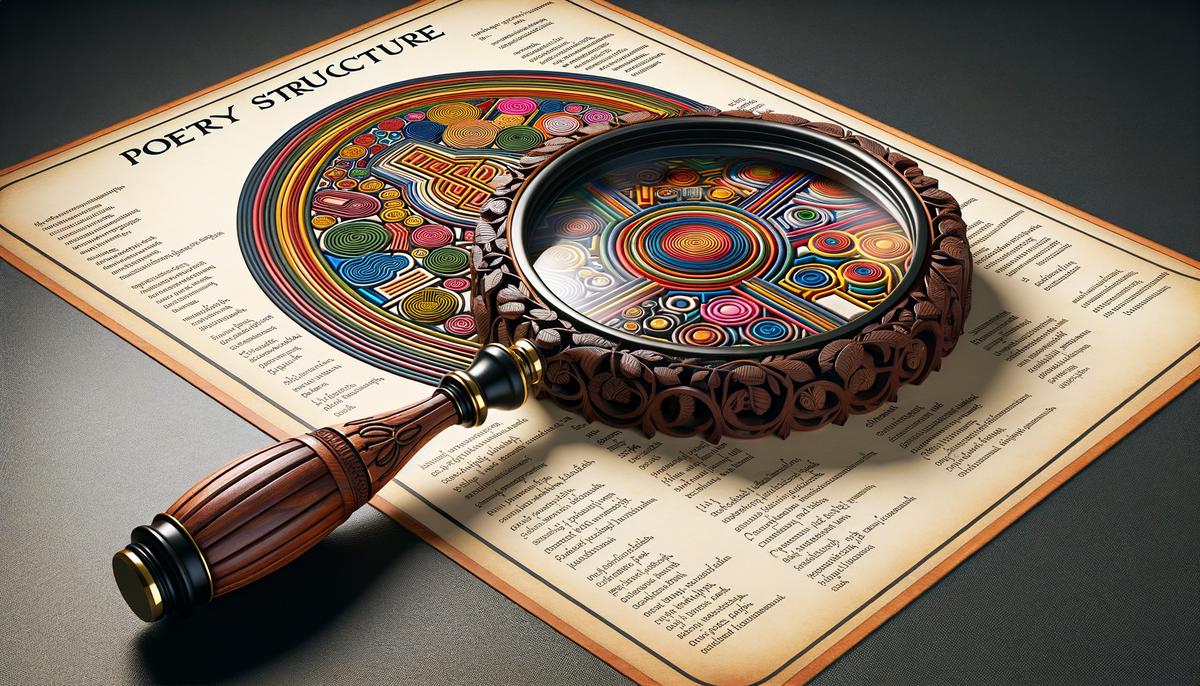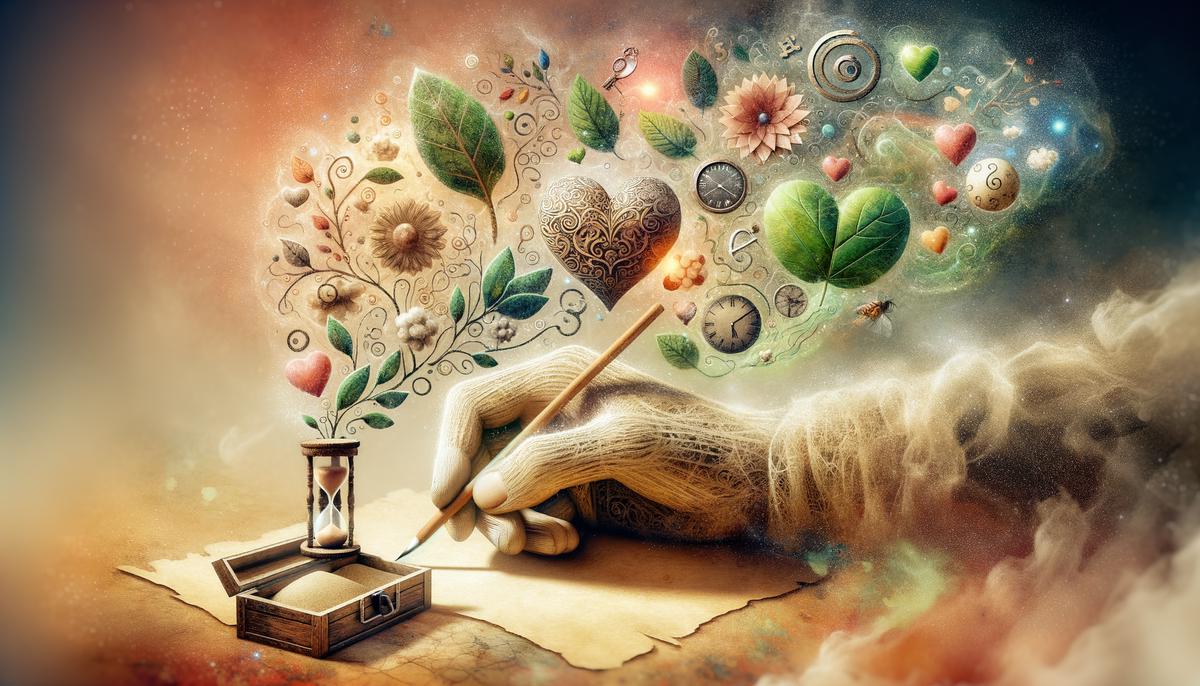Have you ever picked up a poem and felt drawn into its world, but couldn’t quite put your finger on why? It’s not just about the choice of words or the emotions they stir. There’s something else at play, something fundamental that shapes the whole experience. This article is set to uncover what lies beneath the surface of great poetic works and how it influences us more than we might realize. So, let’s peel back the layers and explore the unseen yet powerful element of poetry that makes all the difference.
Understanding Poetic Structure
What Makes a Poem’s Structure So Crucial?
Ever wonder what makes great poems stick in your mind? Is it just the fancy words or the deep emotions? Nope, there’s more to it! The secret sauce, my friends, is the poem’s structure. It’s like the skeleton of a poem that holds everything together. Let’s dive into why the structure of a poem is an absolute game-changer.
- Sets the Mood and Tone
- Emphasizes Important Points
- Enhances the Flow
- Creates Patterns (and Breaks Them)
- Connects with Tradition (or Ditches It)
First off, the structure of a poem can set the whole mood. Imagine reading a poem about a storm. Short, choppy lines might make you feel the chaos and intensity, right? On the flip side, long, flowing lines could paint a calm, serene picture. The way a poem is structured tells us how to feel before we even dive deep into the words.
Poets are clever. They use structure to spotlight the super important bits. A sudden short line in the middle of longer ones? That’s probably something you should pay attention to. It’s like the poet is saying, “Hey, this right here, this is the big deal!”
Ever noticed how some poems just flow like a river, while others are more like hopping from stone to stone? That’s structure at work. Certain structures guide you gently through the poem, making the reading experience smooth and enjoyable. Others might shake you up a bit, making you stop and think. Both experiences are cool in their own ways.
Patterns in poems – think rhymes, repeated lines, or specific rhythm schemes – catch our attention. They’re satisfying, familiar. But here’s where it gets spicy: when a poet breaks their own pattern, it’s a signal. It makes us sit up and go, “Wait, what’s happening?” That break pulls us deeper into the poem’s meaning.
Some poets stick to traditional structures like sonnets or haikus because it connects us to a bigger history of poetry. It’s like being part of a centuries-old conversation. Other times, poets throw tradition out the window to create something totally new. Either way, the choice of structure adds another layer of meaning to their work – either by embracing the past or by boldly stepping into the future.
So there you have it! The structure of a poem isn’t just about making words look pretty on a page. It sets the mood, highlights key points, guides the flow, creates satisfying patterns (and then sometimes breaks them!), and connects us with tradition – or not. Next time you read a poem, take a moment to notice its structure. It might just reveal something amazing!

Exploring Themes and Imagery
How Can Themes and Imagery Transform Your Poems?
Diving deeper into the poetry universe, let’s explore exactly how themes and imagery can totally revamp your poetic creations. Whether you’re a budding poet or someone just dabbling for fun, these elements are your secret weapons for crafting verses that resonate deeply and create vivid pictures in readers’ minds. So, let’s cut to the chase and dive right in!
Injects a Layer of Depth
Imagine peeling an onion. Each layer you peel away reveals something new. Similarly, incorporating rich themes and vibrant imagery in your poems adds layers of depth, making each read a discovery. By weaving in complex themes such as love, loss, or the passage of time, and pairing them with striking imagery, you turn straightforward poems into multi-dimensional masterpieces that invite readers to think, reflect, and maybe even change their perspectives.
Serves as a Bridge to the Reader’s Emotions
When you choose the right themes and imagery, your poems become a direct hotline to the reader’s emotions. This is like finding a direct pathway to their heart. By painting pictures with your words—whether it’s a vivid sunset or the haunting emptiness of loss—you help readers experience the emotional weight of your themes firsthand. It’s all about making them feel something profound.
Unveils Your Unique Voice
Your choice of themes and imagery is like your poetic fingerprint—utterly unique to you. This combination not only distinguishes your work but also showcases your viewpoint, offering a glimpse into your world. Want to stand out in the vast ocean of poets? Your distinctive themes and imagery are your life raft, ensuring your voice is heard loud and clear.
Offers a Visual Feast
Let’s face it: we humans are visual creatures. Incorporating imagery in your poems transforms your writing from mere words on a page to a rich tapestry for the imagination. It’s like turning your poem into a blockbuster film where every line paints a scene, conjures an atmosphere, or evokes an emotion. The more vivid your imagery, the more immersive your poem—simple as that.
Encourages Interpretation and Discussion
Last but not least, smart use of themes and imagery invites readers to dive into interpretation and discussion. It’s like leaving breadcrumbs for them to follow, uncovering the meanings and connections you’ve weaved into your verses. This isn’t just about writing poems; it’s about sparking conversations, sharing insights, and maybe even inspiring others.
By now, you should be buzzing with ideas on how to sprinkle your next poetic endeavor with impactful themes and mind-blowing imagery. Remember, the beauty of poetry lies in its boundless possibilities and the personal touch you bring to it. So, go ahead, experiment with themes and imagery to transform your poems from simple verses to profound expressions of human experience. Your readers are waiting to be mesmerized!

The Art of Revision
Revising Your Poem: Why It’s a Game-Changer
Diving deep into the art of poetry, we unearth the power of themes and imagery. This isn’t just fluff – it’s the heart and soul of your poem. Let’s break down why honing in on these aspects through revision transforms your poem from good to unforgettable.
Adding Depth Through Themes and Imagery
Picture this: Your poem is a pool. On the surface, it’s water. But when you add themes and vivid imagery during revision, it’s like diving into a whole new world. These elements are your goggles, allowing you to see the colorful fish, the texture of the rocks, and the rays of light dancing in the deep. Themes are the currents that pull readers through your poem, while imagery lets them see, feel, and experience your world. Revision is where you check if the goggles fit well, ensuring a clear and immersive view.
Connecting Emotions
Think about the last time a poem truly moved you. Chances are, it spoke to something deep inside. The right theme can whisper directly to the soul, and imagery makes the heart feel like it’s witnessing magic. It’s in the quiet moments of revision that you fine-tune this connection, adjusting dial on the emotional radio until the static clears and the music flows straight into the heart. That’s the power of revisiting and refining your choice of themes and imagery.
Unleashing Your Unique Vision
No two poets see the world the same way, and that’s your superpower. Revision lets you sharpen your unique perspective, ensuring that your themes and imagery stand out in a sea of words. It’s like signature scent – unmistakably you. Each round of edits carves out the rough, generic edges, revealing the masterpiece only you could create. It’s not just about being different; it’s about being authentically you.
Crafting Vivid Visual Experience
Imagine walking into a poem and looking around. What do you see? With powerful imagery, each line paints a picture, turning your poem into a gallery of moments and emotions. Revising for imagery is like choosing where to hang each artwork for the maximum impact. It’s about making readers not just read your poem, but experience it. They don’t just understand your poem; they live it.
Inviting Interpretation and Discussion
The beauty of poetry lies in its layers. Themes and imagery are your invitation to the readers to dig deeper, to uncover the treasures hidden beneath the surface. Through revision, you plant seeds of curiosity, crafting nuances that beg for discussion and interpretation. Your poem becomes a garden of thoughts, where every reader can find their own path, their own meaning. That’s the ultimate goal: to create a world that continues to evolve long after the poem is read.
Revising your poem is a journey of transformation. It’s where the magic happens, turning simple words into portals to new worlds. By focusing on themes and imagery, you’re not just writing poems – you’re crafting experiences, emotions, and discussions that can change the way someone sees the world. So, take your time. Dive deep. Revise. The game-changer is not just in the writing, but in the re-writing, where your true voice and vision come to life.

As we’ve explored the intricacies of poetry, from its structure to the subtle art of revision, it becomes clear that crafting poems is much more than stringing words together. It’s about creating an experience that resonates, drawing readers into a world woven from the fabric of imagination, themes, and vivid imagery. Every poem is an opportunity to transport someone to a place they’ve never been, to feel emotions they’ve never felt, or to see the world through a different lens. By paying close attention to these elements, we’re not just writing; we’re breathing life into words and inviting readers to share in that life. Remember, the true essence of poetry lies in its ability to connect, to illuminate, and to inspire. So, let’s keep writing, revising, and sharing our visions with the world—one poem at a time.

























